 Types of Abortion: By Trimester, What to Expect, and Resources
Types of Abortion: By Trimester, What to Expect, and ResourcesWarning: The NCBI website requires JavaScript to operate. Legal Barriers to Second-Trimester Abortion Provision and Public Health ConsequencesB. S. Jones performed the legal analysis and evaluation of changes in service delivery as a result of the requirements of the ASC. T. A. Weitz conceptualized the project, provided the context and the fund, and performed the evaluation of changes in clinical practice. Abstract Many women need access to abortion care in the second quarter. Most of this care is provided by a small number of specialized clinics, which are increasingly regulated by regulations that include prohibitions of so-called partial birth abortions and requirements that the clinic calls as an outpatient surgical center. These regulations make doctors change their clinical practices or reduce the maximum gestational age to which they perform abortions to avoid legal risks. The needs of abulent surgical centres significantly increase abortion costs and reduce the availability of abortion services despite the lack of evidence that the use of such facilities positively affects health outcomes. Both types of laws threaten to further reduce access to and quality of second-quarter abortion care. The 1992 U.S. Supreme Court decision Planned Parenthood of Southeastern Pennsylvania v Casey established a new standard for abortion regulation, making restrictions admissible as long as they do not place an " overload " for women. In response to this decision, the states have passed over 500 laws restricting access to abortions. Some of these laws, such as waiting periods, partial coercion requirements and parental participation mandates, point to women ' s decision-making, trying to deter them from having abortions. These laws may also impose criminal penalties on suppliers for non-compliance. A second set of laws addressed directly to abortion providers make abortion provision more difficult and costly, and provide strong incentives to doctors not to provide abortion services. We adopt this second set of laws, which have significant capacity to reduce access to and quality of abortion in the United States. We choose to focus on regulations that specifically affect second-quarter abortion, because, despite the constant need for second-quarter abortion services, public support for these abortions is low. This lack of public support makes second-quarter abortion extremely vulnerable to political efforts to restrict access. We examine two types of restrictions that affect second-quarter abortions: prohibitions of so-called partial birth abortions and requirements that these longer-term abortions take place in an environment that qualifies as an outpatient surgical center (ASC). Both types of laws threaten to further reduce access to and quality of second-quarter abortion care. BACKGROUND AND CONTEXT The Institute of Medicine defines the quality of health care as "the degree to which health services for people and populations increase the likelihood of desired health outcomes and are consistent with current professional knowledge." This call to evidence-based practice seeks to limit the discrepancies in care, promote the use of treatment protocols known to be effective and eliminate the use of ineffective treatments., Access to quality health care is a priority indicator in the national public health goals outlined in Healthy People 2010, which recognizes the important body of literature that links access to health care with improved health outcomes. We have based our analysis of abortion standards on the recognized need to improve access to quality health care defined by adherence to evidence-based practice and the desire to improve health outcomes. Provision of Second-Trimester Abortions Methods for abortion depend on the stage of pregnancy in which an abortion is performed. In the second trimester of pregnancy, surgical abortion requires additional dilation of the cervix by osmotic dilators, medications or both. The most common procedure in the second quarter is the expansion and evacuation, in which a combination of instrumentation and aspiration is used to eliminate the fetus. After 20 weeks, doctors usually start dilation at least one day before the procedure. Two variants of dilation and evacuation are recognized, although there is no bright line between them: intact dilation and evacuation (sometimes also called dilation and extraction), in which the fetus is largely removed intact and instruments are used to compress the fetal skull to allow safe removal through the cervix, and non-inact dilation and evacuation (sometimes called dilation or dismemberment), A smaller number of abortions use drugs to induce the job to expel the fetus. These classifications, however, can be misleading, because multiple techniques can be used in the performance of a single abortion. Attention to abortion is best understood as a continuum of techniques, from induction to dilation and evacuation and from intact to elimination in multiple parts, rather than as different categories. Given these overlapping techniques, it is impossible to determine the absolute number of dilation and evacuation abortions that are completely intact or completely disarticulated. These data are highly inconfiable and inconsistent with clinical practice. Abortion is very safe in both the first and second quarters. The risk of mortality is approximately 0.6 deaths per 100,000 abortions, and the risk of major complications is less than 1 per cent. The risk associated with abortion increases with weeks of pregnancy: a study of abortive complications from 1988 to 1997 found that the risk of death increased by 38% per additional week of pregnancy, throughout pregnancy. However, second-quarter abortion remains a very safe procedure. The Need for Second Quarter Abortion Although most abortions occur in the first quarter of pregnancy, many women need access to abortion care in the second quarter. In 2004, 12 per cent of legal induced abortions occurred after 13 weeks of pregnancy, or nearly 150 000 procedures. The proportion of abortions performed after 13 weeks of pregnancy has changed at a minimum since 1992. Several studies indicate that factors that cause women to delay abortions until the second quarter include cost barriers and access, late pregnancy detection and difficulty deciding whether to continue pregnancy. In part due to their increased vulnerability to these barriers, low-income women and women of color are more likely than other women to have second-quarter abortions. Furthermore, women seeking abortions for fetal or maternal health indications often do not get an abortion until the second quarter – because many genetic and health conditions in the fetus are not diagnosed until after the 12th week of pregnancy. Similarly, health conditions in pregnant women cannot arise or can only be complicated in the second quarter. The geographical distribution of second-quarter abortion services in this country is uneven and the limited available data indicate that many women lack access to the necessary services. According to the 2005 survey by the Gutmacher Institute, most abortions between 17 and 24 weeks are performed in a few free-home abortion clinics. Only 20 per cent of the independent abortion clinics offered abortions after 20 weeks (approximately 350 facilities), falling from 24 per cent in 2001. Although most of the facilities identified as abortion providers with gestational limits between 17 and 24 weeks were hospitals, most of these facilities only provided a few abortions each year, usually only in cases of fetal anomaly or health risks to women. Case reports document the failure of some hospitals to provide care even in these last circumstances., The Abortion Monitoring Report published by the Centers for Disease Control and Prevention in 2006 reports data collected in 2003 on abortion for 47 states (excluding California, New Hampshire and West Virginia). These data allow to identify states with limited availability to abortion at each gestational limit, defined as those states with less than a third of the national average for abortions performed at each gestational limit. We applied this formula for an approximate estimate that 5 states had extremely limited availability of services in the second quarter, nine states had extremely limited availability of services after 15 weeks of pregnancy, and 19 states had extremely limited availability of services after 20 weeks. (Table 6) Consequently, access to abortion was severely limited to women living in those states (). The most recent restrictions have further reduced access to care in some former states. Availability of abortion services in the second quarter: United States, 2003. Access to second-quarter abortion The cost of abortion is an important factor in access to care because abortions increase in the price with weeks of pregnancy and are therefore more expensive later in the second quarter. When the associated costs, such as transportation, night accommodation (because post-second-quarter abortions require more than one day to perform), and the price of abortion is added in the second quarter later dramatically increases. The Hyde Amendment (first passed in 1976 and approved each year thereafter) prohibits the use of federal funds to pay abortions except in cases of rape, incest or life-threatening, and only 17 states allow the use of state funds for abortions outside these three narrow circumstances. In addition, 12 states restrict abortion coverage in public employee insurance schemes, and 5 states restrict abortion insurance coverage in private insurance schemes. Combined with the public controversy over abortion, confusion over insurance coverage causes many women to pay out of their pocket rather than seek clarification on coverage. Women who choose to pay for their abortions also raise concerns about confidentiality and privacy. Finally, some abortion clinics do not accept third-party beneficiaries. Together, these factors make three quarters of women receiving outpatient abortions pay the procedure with their own funds. Women with limited financial resources can be found in a vicious cycle: at the time when they have secured the money for an abortion done at a gestational limit, their pregnancy has advanced in the following. Studies continue to show that the lack of financial support for abortion results in delays that push the procedure into the second quarter. REGULATIONS THAT REDUCE ACCESSThe access to second-quarter abortion care is already severely limited in the United States due to poor geographical distribution and cost. Two types of regulation of abortion services further exacerbate this access crisis: partial abortion prohibitions and CSA requirements. Prohibitions of partial abortion of births point to specific surgical steps used by doctors in the provision of abortion care in the second quarter. In order to meet these requirements, doctors may feel obliged to choose to stop their provision of second-quarter abortion care completely and to alter their clinical practices in ways driven not by medical evidence or professional judgment, but by the need to avoid criminal liability. The second type of regulation requires unnecessarily that abortions are performed at the ASC facilities established for more sophisticated and intrusive surgical procedures. These costly requirements can force many suppliers to stop offering services or raise their prices at prohibitive levels for some women seeking care. Both regulations require that the practice of abortion care change without taking into account evidence or clinical trial and reduce access to second-quarter abortion care. Prohibitions on Abortion by Partial BirthThe method of abortion prohibits and its applicability. On several occasions since the legalization of abortion, individual states have tried to prohibit certain abortion methods. This trend came to new heights in the early 1990s when the opponents of abortion rights, fed by a presentation at a national abortion conference on intact dilation technique after 20 weeks and abortion of evacuation, invented the term partial abortion of birth, and convinced legislation in more than half of the states to ban the procedure. Because abortion practically always involves the vaginal removal of the fetus, these prohibitions exposed all abortion providers, and in particular the providers of second-quarter surgical procedures, to criminal liability for pre-abortion abortions in a "living" fetus. These prohibitions tried to drastically reduce abortion rights by removing the defining characteristic of legal abortion from the pregnancy. Under Roe v Wade, a woman's right to abortion continued to the fetal viability (and beyond that point if the woman faced risks of life or health); under this first wave of prohibitions, the woman's right to abortion ended, regardless of the feasibility, once a substantial part of the live fetus passed into her vagina, an event that inevitably occurs during virtually all abortion procedures unless the doctor takes measures to make a fetus. Many of the laws of this first wave of partial prohibitions of abortion by birth were quickly challenged and were debated by the lower federal courts. In 2000, the Nebraska ban reached the United States Supreme Court, which maintained the unconstitutional law both because it criminalized abortion methods of commonly used prerogability and because it lacked an exception for abortions necessary to protect the health of pregnant women. The decision of the Supreme Court in Carhart v Stenberg made all comparable laws inapplicable, annulling this first wave of partial prohibitions of birth abortion. In response to Carhart's decision, Congress (and some state legislatures) tried to pass new bans on elaborate abortions, and Congress finally enacted the 2003 Federal Act on the Prohibition of Abortion by Partial Birth. This law prohibits an abortion provider from intentionally removing the fetal trunk or fetal head outside the woman's body before fetal death and then taking action, apart from handing over the fetus, which causes fetal death. The law does not apply if the fetal demise occurs in utero before the relevant fetal part is withdrawn. The federal ban, like previous incarnations, applies to abortions of priority and has no exception for abortions necessary to protect the health of women. The federal ban was challenged in three separate judicial actions, and the federal courts in all three actions struck the law. However, in 2007 the Supreme Court, composed of a different set of judges who in 2000, upheld the law in Gonzales v Carhart (Carhart II). The Tribunal generally considered the prohibition of applying only to " inaccurate " procedures, rather than dilation and evacuations that were carried out through the elimination of the fetus in multiple parts referred to by the Tribunal as standard second-quarter abortions. The lack of a bright line between legal dilation, standard and illegal evacuations and dilations, intact and evacuations is evident by the Court's recognition that the ban "excludes the greatest dilation and evacuations in which the fetus is removed in pieces" (p1629) It was then argued that legislatures can ban such intact procedures, demanding doctors to change their abortion technique to promote "spect method of the dignity of human life" (p16) In addition, the Court held that such prohibitions should not contain a health exception, as the medical community had divergent views on the medical benefits of the prohibited technique and safe alternative techniques.(pp1636,1637) Carhart II was the first case of the Supreme Court of Justice to defend the prohibition of the realization of abortion, as well as the first case where it is alleged that a restriction on abortion can be valid without an exception for the health of the pregnant woman. Following Carhart II's decision, abortion providers throughout the country were subject to a criminal ban at least of the techniques used, namely the federal ban. In addition, five states (Louisiana, Missouri, North Dakota, Ohio and Utah) have executable state statutes that apply to previous abortions and criminalize abortion techniques that enter their definitions of partial birth abortions, and other states may approve more prohibitions at the next legislative sessions. These new laws are likely to include both prohibitions that reflect the language of the federal ban (and thus allow both state and federal application) and prohibitions that expand into federal law to prohibit additional forms of surgical abortion, especially in the second quarter. Effect of the bans on second-quarter abortion care. Individual doctors differ in the techniques they prefer to use in the performance of the second-quarter abortion. There are no data on the relative safety of various techniques, so doctors should rely on their clinical trial to determine the best course of care for their patients. Experts in Carhart II trials testified that intact dilation and evacuation may be the safest abortion technique for some women with medical conditions such as uterine scars, hemorrhagic disorders, heart disease or inmunitary systems committed, as well as for women with conditions related to pregnancy as a placenta prior and accreta (placental growth over the cervix or inlated) for women. In addition, experts testified that intact dilation and evacuation can generally be a safer technique than dilation and evacuation later in the second trimester because it involves less instrumentation in the uterus and therefore less risk of uterin perforation. Data from a small research study that examined the differences in results between techniques support this claim. The Court, however, confirmed the prohibition. Immediately after the Court ' s decision to defend the ban, second-quarter abortion experts raised concerns about how doctors could alter the care they provide in an effort to continue offering second-quarter abortions without tracking the law, while continuing to pay safe attention. These changes include reducing the amount of cervical dilation and using medications to cause fetal demise before starting abortion. Changes in the amount of cervical dilation are considered a possibility, as during the course of the Supreme Court's oral argument, the judges questioned whether the amount of dilation a doctor was looking for could be considered as an intention to perform an intact procedure. Reduced dilation is clinically important because proper dilation is a critical factor in the safety of dilation and evacuation, and inadequate cervical dilation can increase the discomfort of the procedure and the risk for women of cervical potential injury. However, the extent to which doctors have altered their practice in this way is unknown. There is more evidence of the second modification to practice: the use of a medication to cause fetal demise. Because the law applies only to a living fetus, inducing fetal death before starting the abortion shields that the doctor violates the law. Reflecting this potential, within the weeks of the Court ' s decision, the National Abortion Federation, the professional organization for abortion providers, and the Federation of Family Planning of the Americas published new clinical guidelines on the administration of digoxin. digoxin, a heart medicine approved for other uses, may be injected through the abdomen into the amniotic fluid or fetus in order to induce fetal demise. Other medicines, such as potassium chloride, may also be used. The use of digoxin and potassium chloride for fetal demise seems safe in practice. , It is important to note that some doctors articulate clinical justifications for the use of agents to induce fetal demise prior to the initiation of any abortion in the second quarter after attempting to avoid violating the Federal Act on the Prohibition of Abortion by Partial Birth. Among them is the belief that the fetal demises before starting abortion makes the procedure easier because the fetus is softer and the desire to avoid the delivery of a living but not viable fetus. However, only a randomized and blind controlled trial has explored the problem, and that study (of 126 procedures) found no differences in blood loss, pain scores, difficulty of procedure or complications between procedures preceded by the administration of digoxin or placebo. Thus, when doctors implement these new practices only to avoid prosecution under prohibitions, their decisions are not based on scientific evidence or their best clinical trial, and therefore the overall quality of care is compromised. In order to avoid taking an undesirable change in practice, or simply to eliminate your risk of prosecution, some providers may choose to stop performing procedures of total delay and evacuation or substantially reduce the gestational limit to which they perform abortions. Their actions could exacerbate the shortage of second-quarter abortion services in the United States. Because there are so few late-quarter abortion providers, any reduction in the number of providers could have a significant effect on access to care. Prohibitions may also have an important effect on training. Doctors interested in their actions in the O.R. being misinterpreted or questioned may refuse to allow medical students, nursing students and residents to observe their second-quarter abortions. This decrease in exposure has implications for the future of the provision of abortions: research has shown that exposure to abortion during training increases both support for colleagues who perform abortions and the will of students to provide post-resident abortions. – Requirements of the Outpatient Surgical Center ASCs are a class of health care centers much more sophisticated than outpatient clinics and doctors' offices and are used for a wide range of surgical procedures that do not require a night hospital stay. Procedures performed in ASCs may be quite invasive and complex; commonly performed procedures include opening the esophagus; removal of breast tumors, lymph node and bladder; and the reach of the colon, stomach, and intestines. Numerous smaller surgical procedures can be performed in the offices of the doctors and in the outpatient clinical settings, instead of in the ASCs, for reasons of cost, comfort and comfort of the patient.(p241–244)The entire states have enacted laws that limit the performance of abortions to authorized ASC settings. These specific laws do not require the use of ASCs for the performance of other procedures of comparable complexity and risk. Procedures that are comparable to abortions in the first or second quarter and are often performed in outpatient clinics or medical offices instead of ASCs include hysteroscopy, surgical termination of abortion, vasectomy, sigmoidoscopia, and minor neck and throat surgery. (Some states have laws of neutral-abortion surgical facilities, which are not discussed here). Although State laws that limit the provision of abortions to the ASC environments occasionally apply to abortion providers at any stage of pregnancy, they are more often applied only to second-quarter abortion providers. In these states, doctors who wish to perform second-quarter abortions should make their offices comply with the state's ASC regulatory scheme or gain access to an existing ASC. This last option has proved illusory for many abortion providers, however, because existing ASCs will often not allow abortions for political, philosophical or security reasons. In this paper, 6 states demanded that second-quarter abortions, but not other comparable procedures, be performed in facilities that meet state standards for outpatient surgical facilities: Georgia, Indiana, Mississippi, Missouri, New Jersey and Virginia.– Four states demanded that abortions after a particular gestational age in the second quarter be performed in ASCs: Illinois and South Carolina (18 weeks), Rhode Island (19 weeks), and Texas (16 weeks).- AASC regulations are generally quite extensive, covering standards for the physical plant, staffing, administration, quality improvement, etc. Consequently, CSA standards are often extremely costly for abortion providers to comply with. These costs are particularly onerous in states that apply the physical plant requirements of their ASC regulations to existing abortion facilities, rather than paying such facilities for the purposes of construction standards until the facilities move or undertake substantial reforms. The costs and burdens resulting from the imposition of ASC requirements have prevented or prevented doctors in some states from providing abortions. For pregnant women, the corresponding effect of laws and the response of doctors to them has been to hinder (and possibly prevent) timely access to safe and legal abortion services. However, there is no evidence to show that the provision of abortions in CSAs positively affects the complication rates or outcomes of patients ' health or that offices of doctors and outpatient clinics are inadequate or unsafe facilities for abortion performance. The regulations of the ASC also go far beyond the guidelines for the provision of abortions issued by professional organizations such as the American College of Obstetricians and Gynecologists(p382-384) and the National Abortion Federation. To date, only a couple of judicial challenges have been raised against the requirements of the second quarter ASC, and have met with limited or unsuccessful success. The courts generally consider the requirements as reasonable means to protect the health of patients, and quickly accept the state's asserted authority to regulate abortion in a manner other than comparable medical procedures.(pp873,874) Thus, it is unlikely that the courts will agree on the requirements of the ASC for second-quarter abortion providers with no compelling evidence that women ' s groups will be prevented from obtaining timely abortions. We conduct 2 case studies to illustrate the profound effect that the laws of ASC can have on women's access to abortion services. Mississippi. The Jackson Women's Health Organization (JWHO) is the only provider of outpatient abortions in Mississippi. In 2004, JWHO provided abortions up to 16 weeks of pregnancy and complied with the existing regulations of the health facilities applicable to outpatient abortion providers for pregnancy of that duration. During 2004, approximately 375 second-quarter abortions were performed in the state. That year, the State passed a new law requiring abortions after the first quarter to be carried out in a hospital or ASC. This law actually amounted to a total ban on second-quarter abortions, as abortions are virtually indisposable in Mississippi hospitals, no existing ASC in the state provides abortions, and in Mississippi, abortion clinics are not eligible to be licensed as ASCs. JWHO challenged the 2004 law in a case filed by the Reproductive Rights Centre, which succeeded in invalidating the law before it came into effect. While the demand for JWHO was in progress, however, the legislature revised its approach and in 2005 enacted a new law that requires second-quarter abortion providers to comply with all the regulations of the ASC, even though the facilities of those providers were not entitled to license as ASCs. Mississippi ASC regulations are comprehensive and costly. For example, an ASC should have 1 registered nurse (RN) to supervise the nursing staff and an additional RN for every 6 patients in the center, and each doctor in the center must have admitted privileges in a local hospital. Both requirements created unnecessary and discouraging obstacles for JOMS. For example, if 8 clinical patients were to be serviced at the facility, 3 NRs would be required; neither would the guidelines for the American College of Obstetricians and Gynecologists nor those of the National Abortion Federation recommend such staff levels.– The RN requirement in particular created a major obstacle to the JWHO because of both the high cost of hiring multiple RNs and the current shortage of RN in this country. The local privilege admission requirement was unnecessary because JWHO already had a transfer agreement with a local hospital, which agreed to provide care to JWHO patients in any emergency. The requirement was impossible for JWHO to meet because it depends on doctors who travel from outside of state. The use of these distance doctors is common in many parts of the United States that have a shortage of local doctors willing. Doctors are generally not eligible to admit privileges in areas where they do not reside or in hospitals where they do not usually provide care. JWHO did not challenge the 2005 law in the courts, but tried to comply with the ASC rules. According to Susan Hill, president and executive director of JWHO (phone and fax communications, August 2007), the facility was unable to do so for more than 18 months, during which the clinic was unable to provide abortions after 12 weeks of pregnancy. During this period, JWHO had to reject approximately 600 to 700 women who visited or contacted the abortion clinic, but were already beyond the 12-week limit. Some of these women left the state for abortions, but many women told the clinic that they lacked the resources to travel to another provider. There is no data on how many of these women obtained illegal abortions or brought unwanted pregnancies to a close due to the obstacles they faced in seeking legal care for abortions in Mississippi. Finally, in August 2007, the Mississippi Department of Health approved the JWHO license to provide second-quarter abortions after the facility was able to hire additional nursing staff and obtain a waiver of the requirement that all their doctors have local privileges to admit. JWHO obtained the exemption only after proving not only that the facility had a transfer agreement with the local hospital, but also that one of its staff doctors had local privileges to admit and admit patients to the emergency facility and that the other staff doctors had been informed in writing by local hospitals that were not eligible to apply for privileges. In August 2007, JWHO began providing abortions up to 16 weeks of pregnancy. Given the difficulties he faced in obtaining the exemptions and the license required to provide such services, JWHO seemed unlikely to attempt to extend his gestational limit beyond 16 weeks at the time of this writing. As a result, women who need abortion after 16 weeks cannot access professional abortion care in Mississippi. For these women, abortion is legal but not available. Texas. In 2003, more than 20 providers in Texas were publicly known for abortions after 16 weeks of pregnancy (Linda Rosenthal, JD, former staff lawyer, Center for Reproductive Rights, internal memorandum to the Reproductive Rights Center, January 2004), and 3066 such abortions were performed in the state that year. State regulations allowed Texas abortion providers to perform second-quarter abortions in abortion clinics and medical offices. In 2004, a state law had entered into force requiring abortions after 16 weeks of pregnancy to be carried out in ASCs or hospitals. As a result, existing abortion providers had to comply with the state regulations of the ASC and obtain the ASC license to continue to produce abortions after 16 weeks. Compliance with state ASC requirements was difficult, especially with regard to the physical plant, and existing facilities could not meet the standards without major renovations or moving to new buildings. For example, the physical renovations alone in a facility would cost $750 000 (administrator of a Texas abortion clinic, provided for confidentiality, oral communication, August 2007). Some of the providers started work to meet the requirements of ASC, and others decided to simply stop performing abortions after 16 weeks. When the 2004 law entered into force, no existing abortion provider could perform, and all outpatient abortion providers stopped performing abortions after 16 weeks of pregnancy. As a result, the number of abortions performed after 16 weeks in the state decreased to 403 in 2004, which represents a decrease of more than 85 per cent of the previous year. There is no data available on how many of the approximately 2600 women who did not receive abortions in Texas in 2004 managed to reach out to abortion providers outside the state, requested illegal procedures or simply carried unwanted pregnancies on completion. During 2005, a couple of Texas abortion providers managed to be certified as ASCs. However, the vast majority of abortion providers had not yet qualified at the time of writing, and in 2007 there were only 4 abortion centres in the state that advertised abortion services after 16 weeks. Because the number of providers of these services was so small and the state so large, women seeking abortion after 16 weeks of pregnancy had to travel farther than they did in 2003. In addition, the provisions of the 2004 Act caused a sharp increase in the price of abortions after 16 weeks. In 1 facility that was designated as ASC, the price of abortions increased between $200 and $1,000 per procedure, depending on the duration of the pregnancy: for example, the price of an abortion at 16 weeks went from 495 to $695 and at 17 weeks, from $595 to $895 (a administrator of a Texas abortion clinic, in confidentiality, oral communication, August 2007). In 2006, the number of abortions performed later than 16 weeks in Texas was still less than half the number performed in 2003, and virtually all of these procedures were performed in ASCs (with the others performed in hospitals). The full impact of these changes on the pricing of abortion and access to abortion on women ' s health and life has not yet been adequately measured. TABLE 1 - 263 - 183 927 - 283 Texas State Health Services Department., CONCLUSIONAlthough only 12% of all abortions occur after the first trimester of pregnancy, more than 150 000 women a year need abortion care in the second trimester. Access to quality abortion in the second quarter is therefore an important public health objective. The vast majority of these abortion services are currently provided in specialized clinics, even when the number of clinics continues to decline. Many states lack providers that provide abortion care at the end of the second quarter. In addition to the small number of facilities providing second-quarter abortion care, the cost of such care is a factor that limits the services of women seeking services. The cost of abortion increases with the number of weeks a woman is pregnant, and most women pay in pocket for those costs. Federal funds cannot be used to pay abortions for eligible medicalized women, and only 17 states use state funds to pay for such care. Prohibitions on insurance coverage for abortion increase the number of women without financial coverage for abortion. The effect of standards that increase the cost of abortion is more acutely felt by low-income women who already lack the resources to pay for abortions. Public support for abortion in the second quarter is weak, making this care vulnerable to regulations enacted for ideological or political reasons. Since the recent decision of the Supreme Court in Carhart II, the prohibition of certain abortion techniques in the second quarter is federally enforceable. To meet the ban, some doctors may be changing their clinical protocols, potentially increasing the cost of the procedure. These changes are not driven by scientific evidence or by the best clinical trial of doctors about the best to care for their patients, but by fear of persecution. Other doctors may choose to limit their provision of abortion care, in some cases by completely eliminating access to subsequent second-quarter abortions, as well as exposure to such care for apprentices. Although abortion remains safe and legal throughout the country, access can be reduced. In addition, the ASC laws are forcing some facilities outside the market by imposing requirements for which compliance is extremely difficult and costly. Lack of public funding for abortion care and restrictions on insurance coverage means that even small changes in abortion prices can have devastating effects on access to the care of low-income women. Cost increases disproportionately affect low-income women who disproportionately need these services. The next few years are expected to further increase the levels of regulation for second-quarter abortion care providers. These doctors and clinics have already been easy targets for legislators who oppose abortion rights, and decision Carhart II will certainly serve to incarnate those efforts. Second-quarter abortion providers are likely to face a more onerous ban on abortion methods and facilities requirements, as well as other laws that dictate the way they provide abortion care (e.g. more detailed and extensive part-analysis provisions). Because the legal problems for the second-quarter abortion restrictions are difficult to mount and have been satisfied with only limited success, many of these new requirements can enter into force, becoming part of the legal landscape for the provision of second-quarter abortions in this country. The availability of second-quarter abortions is already very limited, and further reductions will be disproportionately experienced by traditionally marginalized populations. The corresponding effects of this decrease in the availability of women ' s health, and public health in general, are still being studied. Acknowledgements This project was partly supported by the David and Lucile Packard Foundation (#2007-31148). We recognize Dana Sussman for his research aid. Human Participant Protection No protocol is required because the study does not require human participation. ReferencesFormats: Share , 8600 Rockville Pike, Bethesda MD, 20894 USA
Accessibility links Search results Web results Abortion types: By Trimestre, What to Expect, and ResourcesChapter 7/8 Flashcards The Loss of Pregnancy: Spontaneous and induced abortions ... - JStorABORTION - World Health Organization Conference notes, Biology 203 - SIUE[Solved] The most common method of abortion during the abortion guide of 13 ...3270 RCOG. I'm sorry. Abortion of the postsecond-Trimester of WashingtonTransvaginal ultrasound and induced abortion - Obstetrics ... Foot links

Abortion Home Remedies: Know Your Options
Second Trimester Pregnancy Loss - American Family Physician
Early Abortion Options - Our Bodies Ourselves
Genetic and Nongenetic Causes of Pregnancy Loss | GLOWM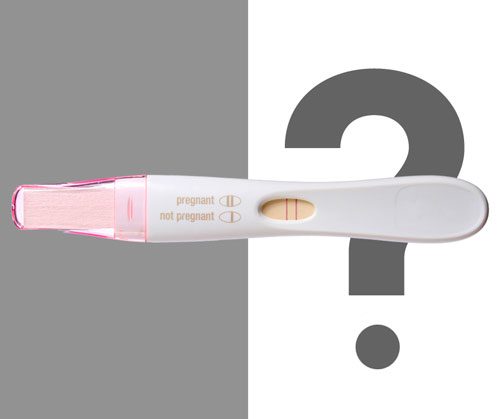
All You Need to Know about Abortion in Singapore | SMG Women's Health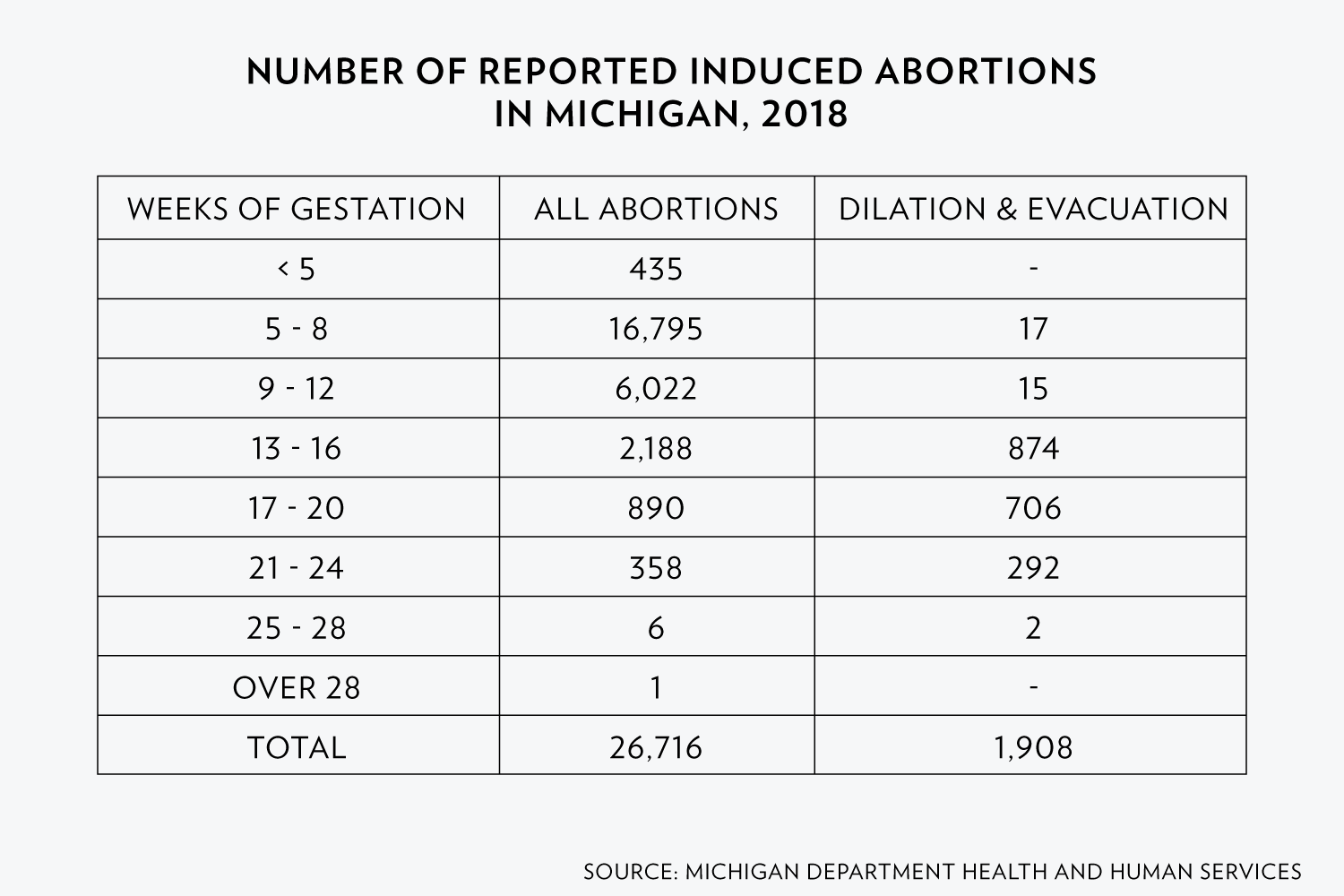
Michigan is about to ban a second trimester abortion procedure. These are the stakes. | Michigan Radio
Abortion Surveillance — United States, 2016 | MMWR
Abortion in the United Kingdom - Wikipedia
Types of Abortion: By Trimester, What to Expect, and Resources
Abortion Surveillance — United States, 2016 | MMWR
Access to abortion services for women in the EU - Slovakia
Abortion statistics for England and Wales 2018
Abortion Surveillance — United States, 2016 | MMWR
Abortion in the United Kingdom - Wikipedia
Different types of abortion: When you can have them and the procedures
Access to abortion services for women in the EU - Slovakia
Types of Abortion: By Trimester, What to Expect, and Resources
Access to abortion services for women in the EU - Slovakia
Miscarriage: Signs, Symptoms & Causes | Live Science
Mid-trimester induced abortion: a review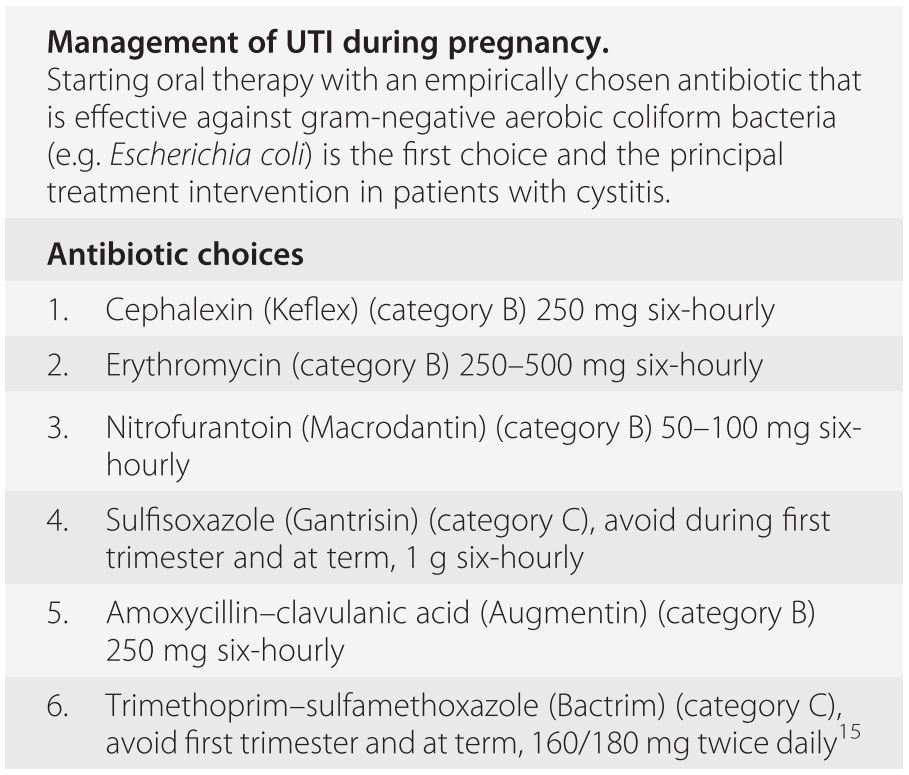
Infections in Pregnancy (Section 2) - Infections in Pregnancy
Abortion statistics for England and Wales 2018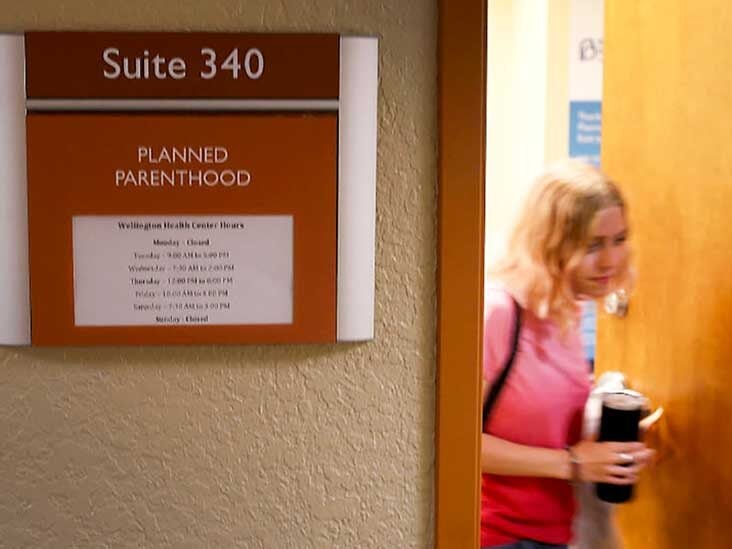
Types of Abortion: By Trimester, What to Expect, and Resources
Full article: Women's experiences when unsure about whether or not to have an abortion in the first trimester
What Does Your Menstrual Cycle Say About Your Fertility?
Who Seeks Abortions at or After 20 Weeks?
Types of Abortion: By Trimester, What to Expect, and Resources
When Does a Human Fetus Become Human? - Article - Renovatio
History of abortion - Wikipedia
Different types of abortion: When you can have them and the procedures
IJERPH | Free Full-Text | Attitudes and Opinions of Young Gynecologists on Pregnancy Termination: Results of a Cross-Sectional Survey in Poland | HTML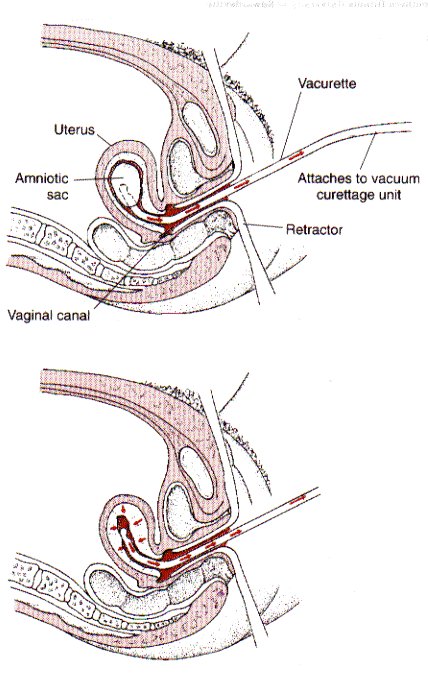
Lecture Notes, Biology 203
Methods of Abortion - Pregnancy Services
Diabetes In Pregnancy - Endotext - NCBI Bookshelf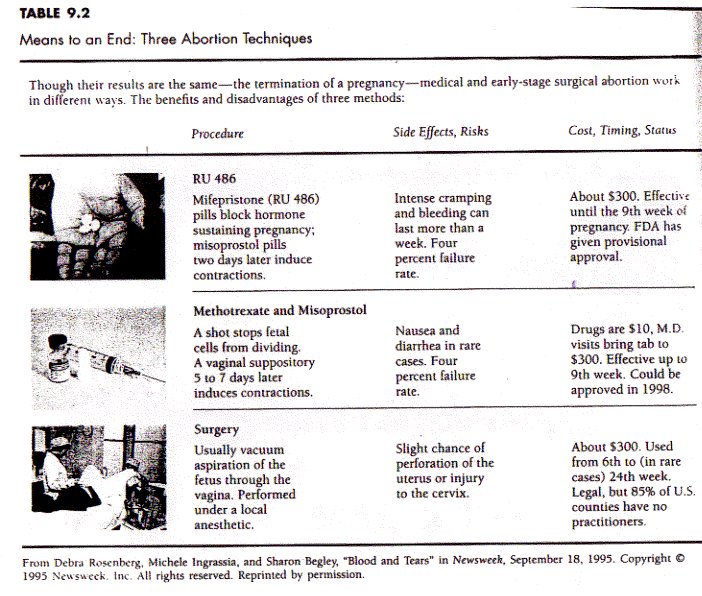
Lecture Notes, Biology 203
Methods of Abortion - Pregnancy Services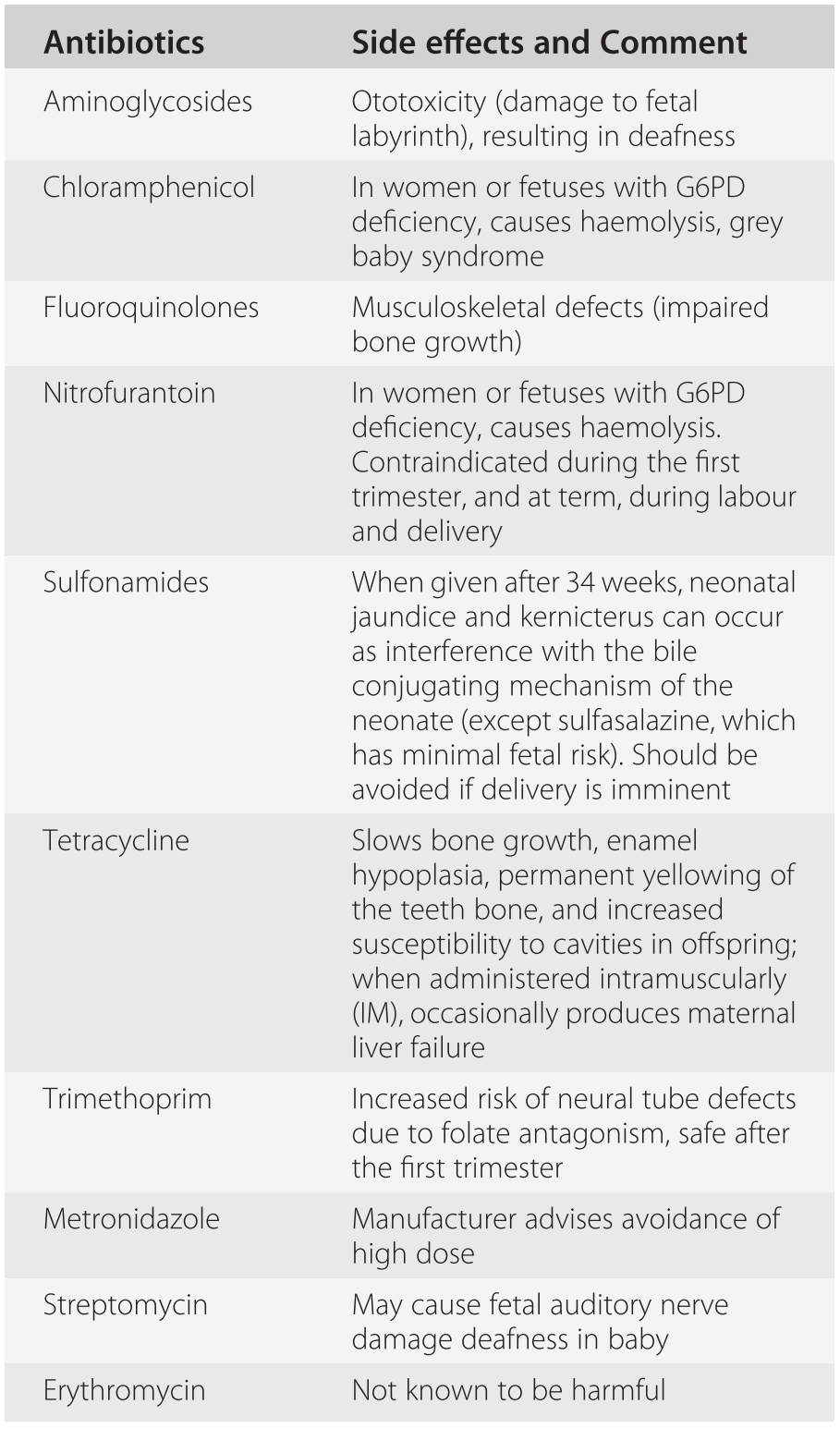
Infections in Pregnancy (Section 2) - Infections in Pregnancy
Abortion Surveillance -- United States, 1992
 Types of Abortion: By Trimester, What to Expect, and Resources
Types of Abortion: By Trimester, What to Expect, and Resources





























Posting Komentar untuk "the most common method of abortion during the 13th to 24th weeks of pregnancy is"